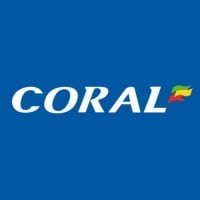
Coral
Coral is a leading European betting and gaming company with strong market positions, high growth and well-established brands, both on the high street and online. We serve customers primarily in the UK and Italy; the two largest regulated gambling markets in Europe. The Group is proud to be the first gambling company to have received full GamCare accreditation across all its UK divisions. Online - The Group provides market-leading sports betting and gaming products for mobile, desktop and tablet devices through its brands: Coral.co.uk, Galabingo.com, Galacasino.com and Eurobet.it.






